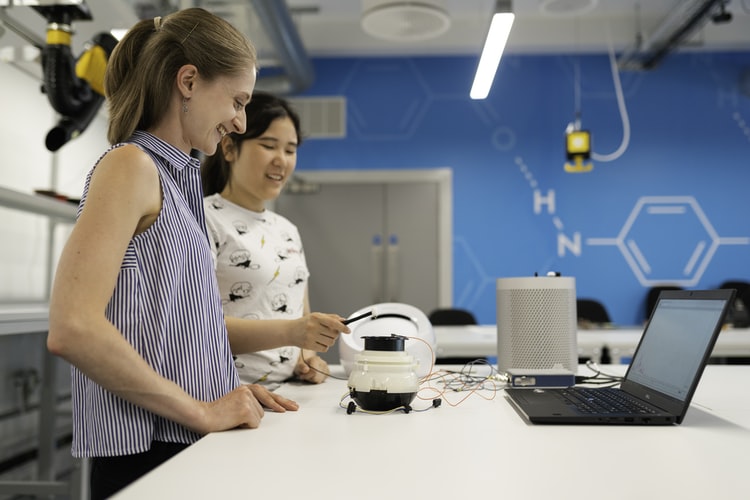Social inclusion can be described as a process which serves to encourage the relations, values and organizations that accommodate people in their ability and wish to actively participate in their political, economic and social life.
Young people are experiencing a complex transition into their adult lives. The fact that this change from a dependent to an autonomous person occurs in a frame of an ever-changing and increasingly volatile world –which is encouraged by rapid digital innovation and a constant emergence of new tools and communication channels – has a particular significance for those young people which come from precarious backgrounds. Their marginalization may result from an inadequate access to public institutions, employment, housing, health, education, mobility opportunities, culture, geography, socio-economic context of their family, disabilities or other aspects, which hinder their social conditions and rights; this may also be centered on their race, ethnicity, gender, sexual orientation, age, migrant status, etc.
Intersection of social inclusion and digitalization
There are multiple causes of lack of inclusion and the majority of the young people which derive from more challenging backgrounds are experiencing more than one form of exclusion. For those young people, inclusion means having to overcome obstacles before they can get access to social rights and before they can participate as full members of society.
This divergence is further encouraged by how easily accessible these digital tools and technology is to young people. Ensuring that socio-economic disparity has a lower impact on the extent of digital access among youth can be crucial in filling this gap in the social inclusion of youth. According to the National Digital Inclusion Alliancethe 5 main elements to consider are:
- affordable, robust broadband internet service;
- internet-enabled devices that meet the needs of the user;
- access to digital literacy training; quality technical support;
- applications and online content designed to enable and encourage self-sufficiency, participation and collaboration
Due to the constantly evolving nature of technology, the needs of young people which serve to satisfy the above-mentioned elements shift in parallel with new innovations. This requires purposeful strategies with the intention of encouraging projects and investments to eliminate or at least thoroughly reduce the socio-economic barriers to access new ICT solutions.

The current pandemic only accentuated the opportunity which these tools bring in youth work. What we experienced though our work in the past year has been an upsurge in access to educational and cultural content for young people. This was enhanced by the fact that location and mobility was a limitation which was fully eliminated by shifting some of that work online.
Online tools have been accepted by the youth sector as important assets, and we integrated them in various activities. Hence, Virtual Meeting Rooms software (Zoom, Skype, Jitsi, etc.) and messaging apps (Messenger, WhatsApp, Snapchat, Viber etc.) became more prevalent in youth work. One of the projects we are involved in, which thrived from the use of such tools is called LEAP – Learning to Participate. Tools such as Google Jamboard, Mentimeter or Padlet helped with gathering and developing ideas among our team and our young participants, which had them coming up with solutions for fulfilling their needs in their local community and possibly improving their future prospects. Thanks to these communication tools and channels young people from different countries managed to meet online, discuss and create. This would not have been possible without digital tools, taking into account the current limitations to mobility (due to Covid-19 restrictions). ICT solutions can serve as channels that improve communication, to interact better, reach out and support young people, as well as aid with the organization and delivery of educational activities. The main takeaway of this is that relevant online content generates an opportunity for young people to further their social, cultural, and human capital.
Additionally, both youth workers and young people can access many (free or paid) educational platforms and tools such as Coursera or Khan Academy(to name a few) for improving knowledge and skills in their chosen topic of interest; or tools such as Scratch which works on the basis of creative programming or Kahoot which stimulates active formal and informal learning through a quiz-game approach.
Generational disparities
The concept of “digital native” and “digital immigrant” was coined at the turn of the century, and tries to describe, somewhat inadequately, the phenomenon of the gap in digital literacy, which started being increasingly present, especially among students and teachers. The difference in digital literacy posed a challenge for teachers, which needed to resort to new tools that young people were, on average, more skilled at. This paradigm oversimplified a phenomenon which didn’t take in account the fact that young people do not inherently have the know-how for proper use of ICT tools. A more thorough education and training of people of all ages in digital tools, would not only increase their skillset, but would inevitably prepare them for the risks which the online environment poses in case of unskilled and unprepared use of technology.
Opportunities
To truly understand the implications of digitalization on the social inclusion of young people it is useful to consider the patterns of their behavior through online connectivity tools (of which the most impactful is their use of social networks). The existence of such a net of inter-personal as well as inter-institutional communication presents an opportunity for young people of all socio-economic circumstances to have access to content, formative or otherwise, which can impact their development through life. It also abridged a gap between the individual and the institutions, as, for example, many EU institutions possess a social media page or profile. This creates an opening for youth to have more access to information useful for their growth, as well as to get a more direct contact with decision-makers and policy creators to comment or get clarification on anything of interest to them politically.
Another benefit of increased connectivity can be observed with minorities. Young people from minority backgrounds have a tendency to resort more to web-based sources than those coming from majority backgrounds when trying to conquer stressful situations such as relationship problems, stress-induced issues or depression. This would therefore imply that young people from minority backgrounds have more benefits from using online tools than youth from majority backgrounds, as digital tools facilitate communication between groups of people that would otherwise be more disconnected.

Digital technology can create a series of opportunities for youth in terms of:
- Health and wellbeing
The use of digital tools can be useful in promoting socialization among young people and youth workers. With the help of online communication young people can have a more inclusive way of contacting peers. This results in better social skills and an easier way of expressing themselves. Additionally, ICT can enable people with disabilities in routine tasks, as well as serve as a helpful tool for young people suffering from mental health issues.
- Communication and Information
Young people have more access to a variety of useful tools and information channels, with which they can pool the information that can help them the most. They intake information rapidly and learn to manage it in accordance to their needs. What is most observed in terms of tendency is that young people tend to consume content which is more visually entertaining or interactive (in the form of videos, sounds, images…) which is why it is crucial for institutions and organizations working with youth to shift communication techniques according to this preference.
- Creativity and self-expression
Young people use digital tools with ease and the ICT world is their natural environment thanks to their constant use of online and digital tools. With that in mind, it is important to realize that young people are not just the highest consumer of digital content, they are also avid creators. It is therefore a channel to develop their creativity and to help them fine-tune their interests.
- Participation
The bread and butter of social inclusion is active participation and civic activation – it is therefore crucial for real social inclusion to have tools which allow young people of all backgrounds to express their needs. But more importantly it is crucial to utilize these tools to incentivize participation among youth through the use of a variety of online instruments such as online voting, online petitions, social media, opinion pools and forums, as well as decision-making tools. These tools allow for activation of youth and thereby bring young individuals one step closer to being active citizens.
To conclude, digitalization opens a world of opportunities for youth. Education, socializing, informing and connecting are all areas which will forever be altered by the digital revolution we are currently still experiencing. ICT is a chance to improve inclusivity by bettering the context of formal and informal learning of young people – to fine-tune their skills which can open their lives to new opportunities of inclusion in society. It is up to all of us to use these tools wisely and direct them in a way which makes these opportunities possible.
REFERENCES:
- Organizational experience
- Șerban, Adina Marina, et al. Council of Europe and European Commission,2020, Research Study.







